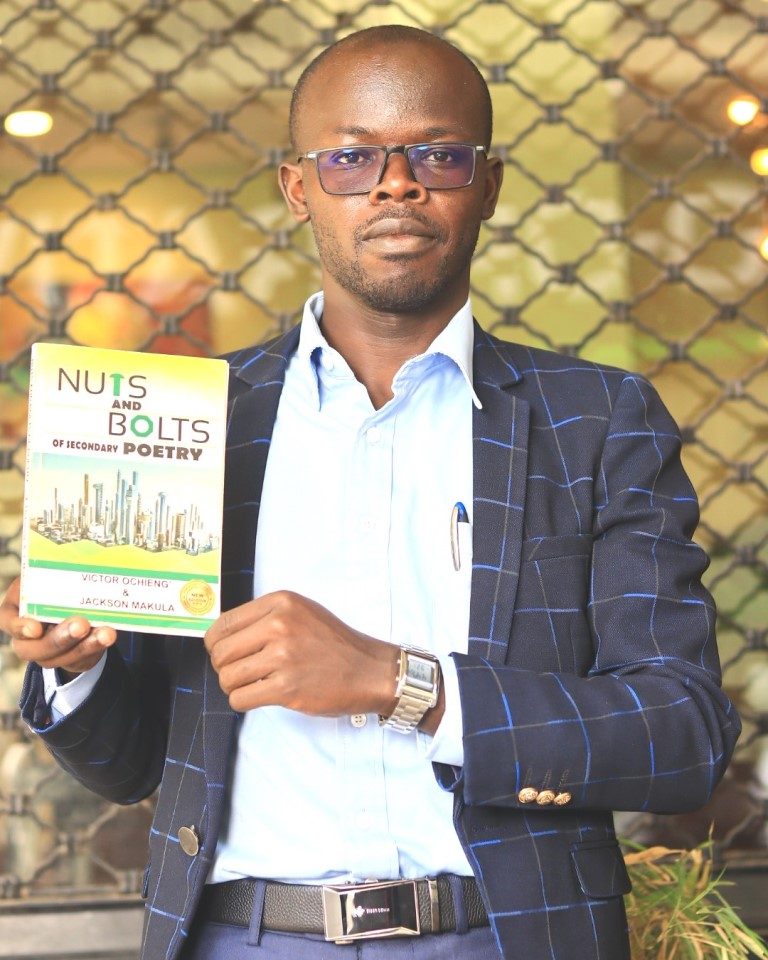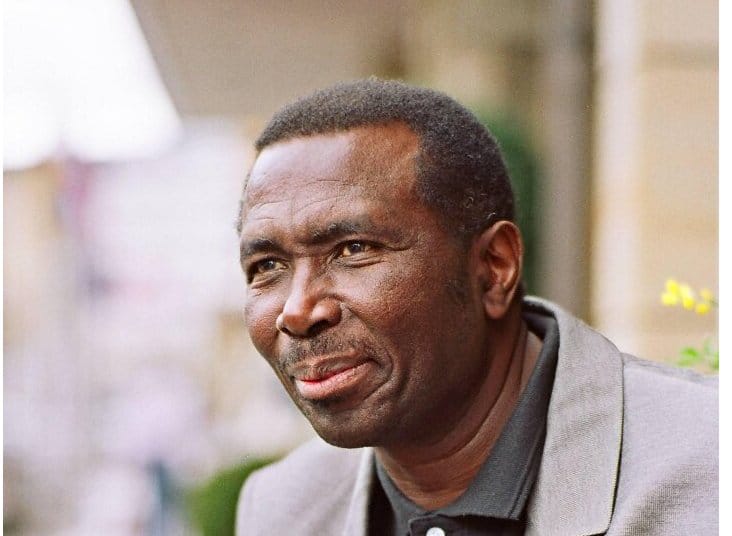As a peripatetic speaker in several schools across the country, whenever I am chanced to address students, I do dote on this: Citing that poetry is my pet subject in English. Interestingly, I always meet mixed reactions from students. Some giggle. Some grin. Some wear mile-wide smiles. Then, I do not fail to see some grimace on a face in the audience.
So, while holed up at Tea Tot Hotel in Machakos Town, I thought a lot about poetry, and more so, about what fellow noble teachers of English can do to make students love and understand it. Firstly, there are several definitions of poetry. In this treatise, I will share what William Wordsworth said about it: “Poetry is the spontaneous overflow of emotions recollected in tranquillity.”
Secondly, when talking about written forms, we have prose and poetry. Prose has sentences and paragraphs. Conversely, in poetry, perfect art where less is more, we simply have lines or verses and stanzas. Then, the person who pens or recites poetry is a poet (male) or poetess (female). When world poets are mentioned, we think of William Shakespeare, Robert Frost, Thomas Hardy, et cetera. In Africa, we celebrate great poets such as Wole Soyinka from Nigeria, Agostino Neto from Angola, Taban lo liyong from South Sudan, Okot p’Bitek from Uganda, and many more. In Kenya, we have great poets such as John S. Mbiti, Jared Angira, Jonathan Kariara, Michere Githae Mugo, and the list is long, and endless.
Consequently, there are several poetic aspects, starting with the title. This is the heading that gives readers a clear and clever clue about the subject matter of the poem, what the poem is all about. For exam purposes, when asked to say what the poem is all about, you paraphrase. Just write it in prose.
Additionally, there is the poetic persona or speaking voice. Persona is a Greek word meaning “mask.” We employ persona in poetry to refer to that character through whom the poet addresses the audience. To know the persona in a particular poem, you rely on three things: One, consider what the voice in the poem says. Two, find out the subject matter of the voice. Three, ascertain what the voice suggests.
Moreover, there is the poetic diction, which is the skillful choice and use of words. Poets focus on the felicity of diction. In poetry, there are two types of diction. One, denotative diction, where words are used to carry their plain meaning, as defined in the dictionary. Two, connotative diction, where words are used to mean more than what lexicographers write in dictionaries. So, denotative diction is surface meaning. Whereas, connotative diction is deep meaning. In a broader sense, the wise use of allegorical, metaphorical and symbolic language in Literature. For instance, we can use the word “rotten” to mean two different things. Such as: (a) this orange fruit is rotten, and (b) the girl is rotten. In (a), the word “rotten” brings out the surface meaning (denotative diction), to imply that the fruit is stale. Whereas, in (b) the word “rotten” has a deeper meaning. The girl is a spoiled brat. She is not morally upright.
Moreover, there is poetic licence: the freedom enjoyed by poets. In Kiswahili, they talk of “uhuru wa mshairi.” Poems exist in two broad categories as metrical or free verse. In metrical verses, poets are keen to adhere to a raft of rules governing poetry as the perfect art where less is more. Conversely, in free verse, poets have the freedom to break rules. Those who know Wole Soyinka, the 1986 Nobel laureate in the agora of Literature, remember, he said, “A tiger does not brag and boast about its ‘tigritude’, instead, it pounces. When you walk along its paths, and you see the skeleton of antelopes, then, you know, some ‘tigritude’ has been done.” In this regard, you can see, as a luminary in the literary world, Wole Soyinka enjoyed the poetic licence of coining the word “tigritude”, which was also accepted in the English lexicon.
Somewhat, poems we consider as metrical verses, have regular lines and stanzas. Such poets stick like a tick to common conventions. They take note of rhyme and rhythm. They do dote on beauty and aesthetics. On the contrary, free verses have irregular lines and stanzas. There is the notable absence of calculated rhyme and rhythm. They focus more on the message and feelings.
On the existence of poetry, we can have oral poems or songs. Remember, every song is a poem, but not every poem is a song. So, as a scribe, I describe hymns and anthems as poetry. In the Bible, there is plenty of poetry in sacred books such as the Song of Songs, Psalms, Proverbs and Ecclesiastes. By the same token, we have concrete poems, which make pictures or shapes using letters and words. Haiku is a type of poem that has its roots in Japan. It is usually about beautiful things; aiming to create pictures and images in the mind. Sonnets are special one-stanza love poems with fourteen lines attributed to William Shakespeare. Other types of poems include: odes, odelletes, ballads, elegies, acrostic and adjective poems.
Furthermore, there is poetic justice, where poets vilify vice but glorify virtue. Meaning, poetry is a perfect art where less is more; poets reward good deeds but punish bad ones. Largely, there are three poetic aspects that confuse people. They include: attitude, mood and tone. Attitude refers to the nature of thoughts, views and feelings of the persona (the speaking voice) in a poem towards the subject matter or action in the poem.
Advisably, it is not right to describe attitude as positive or negative. For such modifiers are general, obscure, sketchy and relative in meaning. Therefore, it is important to cite the specific attitude. In our poetry textbook (Ochieng’ and Makula 2017) titled Nuts and Bolts of Secondary Poetry, we summarised types of attitudes in umpteen ways. For instance, attitudes of pleasure: peaceful, happy and cheerful. Or attitudes of passion: nervous, jealous, hysterical and greedy. And so on, and so forth.
Furthermore, mood is the state of mind of the persona (speaking voice) in the poem. Mood is also the atmosphere or ambience surrounding the poem. To understand mood, try to think about the atmosphere in a funeral ceremony, comedy show, wedding ceremony, riot in town, delivery room, et cetera. There are specific words used to describe moods. For instance, in a funeral, the mood can be: pensive, sad, mournful or sorrowful.
Then, we must know the difference between intonation and tone. Intonation or cadence refers to the fall or rise in voice. Whereas tone is the quality of voice expressing a particular emotion or attitude. For example, when talking to friends, peers or contemporaries, you can use an informal tone. But when in an office where officialdom is needed, you are expected to use a formal or official tone. Comedians use jocular tones. While preachers use a mixture of tones depending on the context. For instance, encouraging tone, warning tone, advisory tone, et cetera.
READ ALSO:
Advisedly, for exam purposes, in the 8-4-4 System of Education, poetry is tested in English Papers 1 and 2. English Paper 1, which focuses on Functional Skills, includes poetry tested in the oral skills section. The examiner majorly tests oral aspects such as description of a rhyme scheme, words to stress, how to say and perform a line, and sound patterns or devices, which include: Rhyme, assonance, consonance, alliteration, onomatopoeia and idiophone. A rhyme scheme can be regular when the pattern is predictable. Or irregular when the pattern is not predictable. In poetry, we stress content words. How to perform focuses on both verbal and non-verbal cues, which are paralinguistic features. How to say is all about verbal cues.
Additionally, English Paper 2 is a Comprehension, Literary Appreciation and Grammar Paper. Poetry is tested in question 3. In this question, students are expected to read the poem and just appreciate this perfect art where less is more. For the sake of profundity and proficiency in poetry, I suggest that learners should read oodles of poems, and just appreciate the pulchritude of poetry. Then, they will be able to answer questions related to poetic aspects and features of style such as paradox used in the title of this essay: less is more. Based on trends in marking and setting of KCSE (2016-2024), poetry alternates with oral narratives or folktales in English Paper 2 question 3.
For instance, in 2016, there was The Road Not Taken by Robert Frost. In 2018, the poem The Man He Killed by Thomas Hardy featured in the KCSE. In 2020, the poem, Love is not All, was tested. In 2022, KNEC tested the poem titled When We Were Young. In 2024 The Song of Lawino by Okot p’Bitek was tested. With this tremendous trend, readers with a predilection for prediction know that, in KCSE 2026, a poem will be tested in English Paper 2, question 3. The setting trend from KCSE 2016, supports my prognostications.
In conclusion, let us go back to where we started. Dear reader, you remember, I talked of the mixed reaction of students whenever I mention that poetry is my favourite part of English as a subject. It is evident, students that wear mile-wide smiles, grin or giggle, enjoy poetry. Then, maybe, those who frown when I mention poetry, seem to see it as a problematic topic in English as a subject. So, what should we do? How do we simplify and demystify poetry? Allow me to say more in fewer words. One, schools should stage academic talks focusing on understanding poetry. Two, teachers of English in schools should provide poetry anthologies that students can read and regale themselves with interesting poems. Three, students should be encouraged to compose and recite poems in school events. Finally, schools should have some homegrown prizes for students who can pen or recite poetry.
By Victor Ochieng’
The writer is the co-author of Nuts and Bolts of Secondary Poetry. He delivers English Improvement Talks in schools to imbue students with a positive mental attitude towards poetry. vochieng.90@gmail.com. 0704420232
You can also follow our social media pages on Twitter: Education News KE and Facebook: Education News Newspaper for timely updates.
>>> Click here to stay up-to-date with trending regional stories
>>> Click here to read more informed opinions on the country’s education landscape






